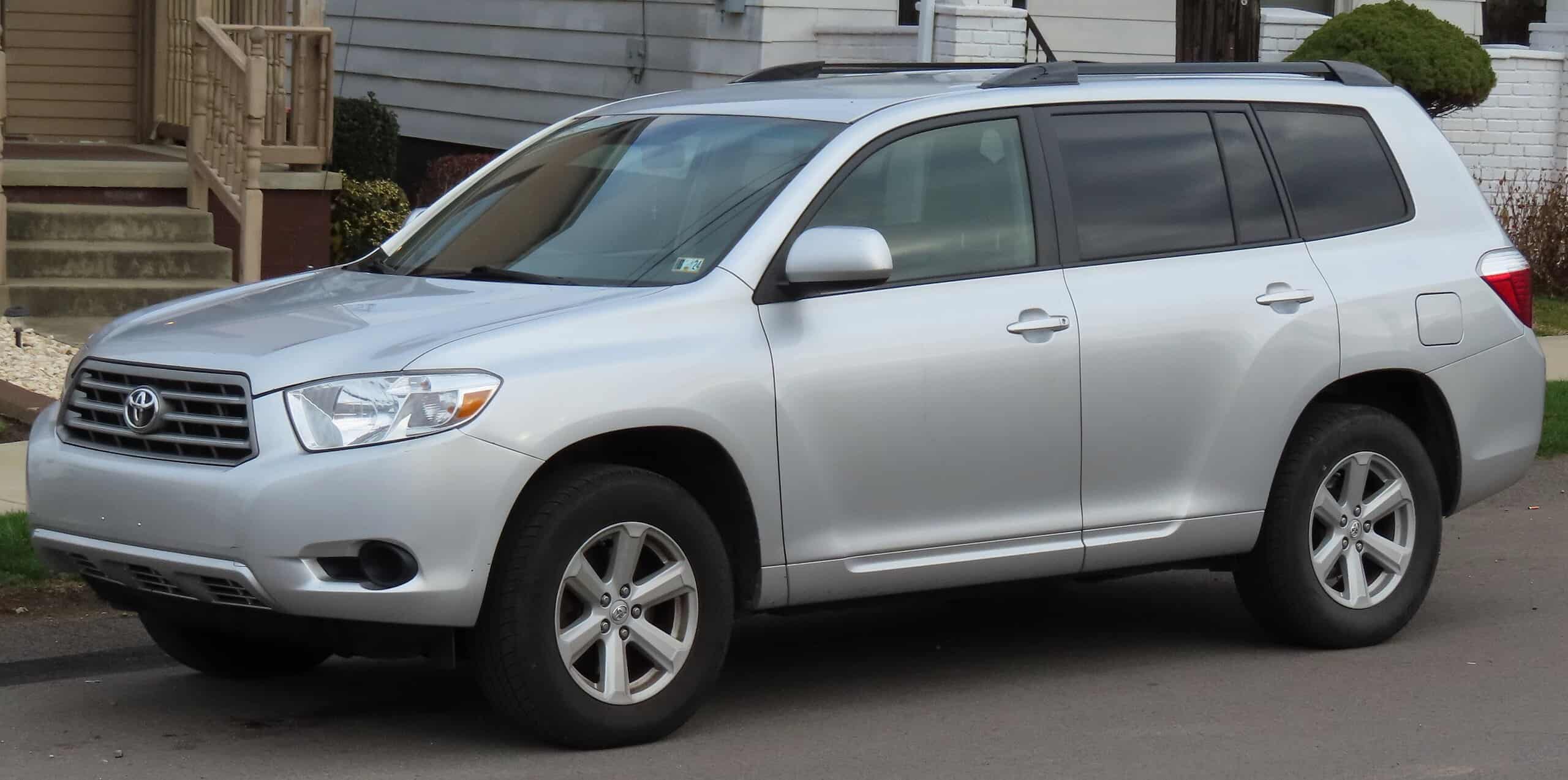Cars and Drivers
Toyota is a highly reliable brand of Japanese car that has sold extremely well across the U.S. Ever since the company entered the American market in the late 1950s, Toyota has been a household name. The brand is known for its exceptional design, reliability, and efficiency.
In January of 2001, Toyota introduced the Toyota Highlander, the brand’s first unibody midsize SUV. This SUV was based on the body of a car, versus the body of a truck. One year later, in 2002, the new spacious Highlander was praised as “the best midsize SUV” by Consumer Reports.
Despite these rave reviews, every car manufacturer makes mistakes, and certain years of specific models have more issues than others. If you have your eye on a used Highlander, don’t second your choice; this Toyota model is certainly worth owning. Simply avoid the years listed here. With this in mind, let’s look at websites like CoPilot, Consumer Reports, CarComplaints, and FIXD to help identify the best and worst model years for the Toyota Highlander.
Why Is This Important?
A vehicle purchase is a huge investment. Most people put effort into researching the best vehicle for their needs, and well as which brands are reliable. Despite Toyota being a well-known, dependable brand, there are bound to be mistakes. Knowing which years to avoid helps in the purchasing process.
Avoid: 2003
One of the worst years for the Toyota Highlander was 2003. Engine overheating was immediately problematic for Highlander owners. What’s worse, over time, this issue could require an entire engine block swap, which can cost upward of $3,000 outside of warranty. According to CarComplaints, out of the 320 or so NHTSA (National Highway Transportation & Safety Administration), one-third were solely related to engine issues.
Another area of concern was focused on brake issues, which led to some costly repairs. Unfortunately, engine issues are the biggest reason to avoid this model year. Between stripped engine bolts on top of the engine block, it’s easy to say this is a year to avoid. There are also a few rollover safety concerns based on NHTSA testing, further amplifying the need to avoid this model year.
Avoid: 2008
The second-worst model year for the Toyota Highlander, 2008, was a year Toyota would love to forget. Out of 474 NHTSA complaints, the largest focus again centers around engine issues. Between random knocking noises and excessive oil consumption, even the new look for the Highlander in 2008 couldn’t overcome some of these customer concerns.
In addition to the above issues, you were concerned about the vehicle’s electronic controls. Highlander owners pointed out that climate controls could randomly stop working, leaving them without AC and/or heat depending on the time of year. Last but certainly not least, the 2008 Highlander has 13 separate recalls, which is unusual for Toyota and the Highlander.
Avoid: 2010
While 2010 was a better year overall than 2003 and 2008, it was still disappointing for the Highlander. On the positive side, the number of recalls dropped to 10, but there are still 10 recalls to consider. Safety scores were a definite bright spot, but it wasn’t enough to overlook the 256 NHTSA complaints. At the very least, engine issues were no longer the biggest concern with the 2010 Highlander, as electrical trouble became the biggest issue. Between the door locks not functioning or the electrical system behaving erratically, it frustrated 2010 owners.
Even though engine issues were not the main issue in 2010, the Highlander still had the second-largest NHTSA complaint volume. Excessive oil leaking remained a primary focal point, but issues with speed control were deeply troubling. The Highlander could suddenly accelerate without any action from the driver, which presented a major safety concern, leading to two recalls in 2010.
Avoid: 2012
There was some good news in 2012, as NHTSA complaints dropped from 2010, but only by 13%. However, any reduction in complaints is sound, even though 2012 still saw numerous steering issues. The biggest driver of issues in 2012 for the Toyota Highlander was primarily focused on the car making a strange noise when turning. Some owners described it as a popping sound, while others said that instead of a sound, the steering wheel would lock up.
Unfortunately, engine problems for the Toyota Highlander did not go away in 2012. Excessive oil consumption seems to have stayed, as does unintended acceleration. What’s worse, FIXD.com points out that 2012 Highlander owners spent an average of $1,050 annually to keep the car in good working order. This is the highest dollar amount for a model year since the Highlander was released.
Avoid: 2015
Since its release, one of the most disappointing years for the Toyota Highlander is 2015. With just shy of 200 NHTSA complaints, it doesn’t have the most volume, but it has the costliest fixes, making it the worst model year overall. Aside from other issues, customers focused on their complaints; seat comfort or discomfort was a priority. Between the uncomfortable seats and wind noise while driving at high speeds, the 2015 Highlander is worth skipping.
Sitting just shy of the 2012 dollar amount, FIXD.com points out that in 2015, Highlanders spent an average of $1,000 to keep the car running yearly. This could include fixes related to the rubber seal failing around the sunroof, which would let water into the vehicle, or it could be related to paint peeling off different areas of the vehicle.
Own: 2007
The last model year of the first-generation Highlander, 2007, saw Toyota working out the generational kinks. It’s easy to call the 2007 model one of the best years to own for Highlander years, even if the body style looks outdated compared to today’s models. Earning the CarComplaints “Seal of Awesome” is no easy task, but it’s exactly what the 2007 Highlander did. With only 146 NHTSA complaints, this model year is looking good.
Regarding quality and reliability, J.D. Power gives the 2007 model one of its top scores of “Great.” Consumer Reports praises the 2007 Highland model’s overall acceleration, fuel economy, and quiet ride. Of course, who can forget the third row, which parents love for separating their kids when they are not getting along?
Own: 2009
Receiving a top prize of “Great” from J.D. Power, the 2009 Toyota Highlander, with its refreshed body, comes out of the gate strong. The good news continues as CarComplaints once again hit the 2009 model with its stamp of approval with the “Seal of Awesome.” With only 168 NHTSA complaints, the Highlander shows its strengths with the Toyota name.
Adding icing to the cake, the 2009 model earns the IIHS (Insurance Institute Highway Safety) Top Safety Pick rating. But wait, the good news with safety continues as NHTSA praised the 2009 Highlander with terrific safety ratings. While electrical issues did raise a flag in 2009, the issues were small enough volume-wise not to change the recommendation that 2009 is a Highlander model year well worth owning.
Own: 2020
With just 91 NHTSA complaints in 2020, things are looking really good for the Toyota Highlander. Now in its fourth-generation body, the Highlander looks as good as it feels to drive. You get strong storage with plenty of space for a third row. Better yet, the second-row seats are as comfortable as ever, further validating the Highlander as a reliable SUV for road trips.
J.D. Power agrees with three ” Great ” ratings across quality and reliability, driving experience, and resale. FIXD.com highlights the 2020 Highlander, which has only two recalls and an average annual maintenance cost of around $464. Add all of this together, and you have an excellent model year that really shows the strengths of what Toyota can do with an SUV.
Own: 2021
Skip ahead one year to 2021, and everything that made the 2020 model year great carries over. Right around 112 NHTSA complaints arrived for this model year, but all things considered, that’s pretty low overall. This is especially true when you learn the crash test scores for the 2021 Highlander helped it earn a Top Safety Pick+, the highest possible rating IIHS can give any vehicle.
Consumer Reports praises everything about the 2021 Highlander’s ride, hybrid fuel economy, and interior controls. It indicates that the gas-powered Toyota Highlander is the third most recommended SUV for the 2021 model year. Coincidentally, the hybrid model was the second most popular SUV for the 2021 model year, which says something about the Highlander overall.
Own: 2022
With only 73 NHTSA complaints filed for the 2022 Toyota Highlander, it’s clear Toyota has found its groove with the fourth generation. While the 2022 model year didn’t introduce any major changes to the interior or exterior, it’s pretty clear Toyota didn’t need to make any changes. NHTSA and IIHS safety scores carried over from 2021, so the Highlander remained one of the safest vehicles in its class.
Similar to 2021, Consumer Reports again shows the 2022 Highlander was the second most popular SUV in its class. Most owners surveyed indicated they would buy the 2022 Toyota Highlander again, which is exactly what Toyota hopes to hear. J.D. Power awarded the 2022 Toyota Highlander its best ” Great ” score around resale value. This should give you plenty of confidence to scoop this model year up if you can find it for a great price.
Thank you for reading! Have some feedback for us?
Contact the 24/7 Wall St. editorial team.




